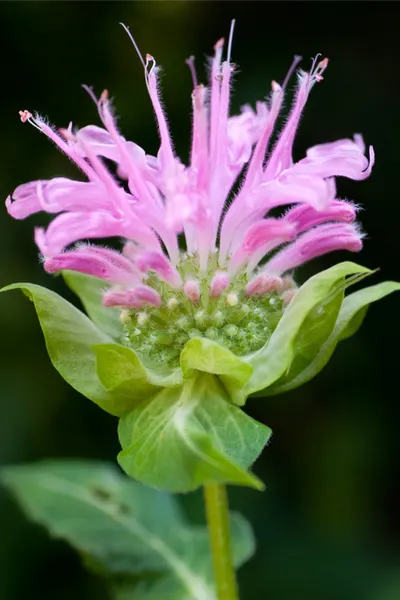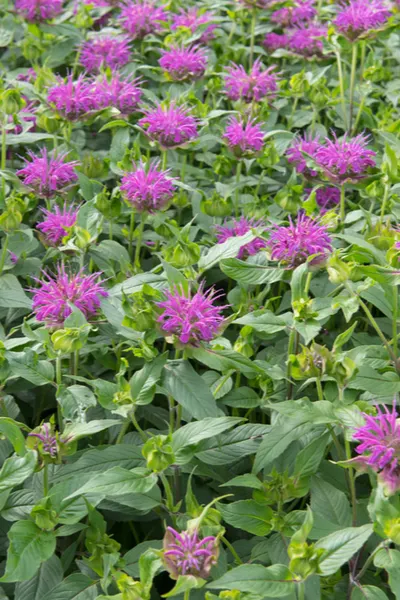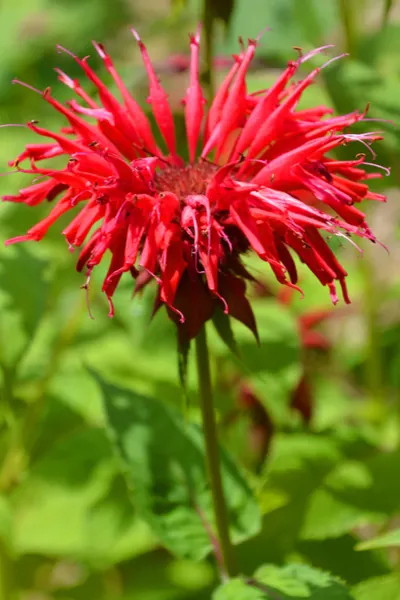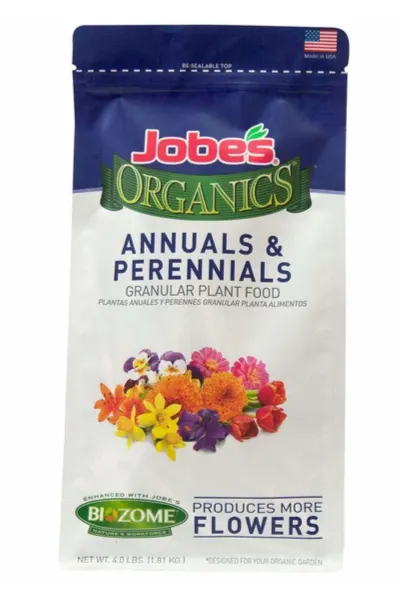If you are looking to attract hummingbirds, bees and butterflies to your landscape, growing bee balm is the perfect plant for you!
Native to North America, the hardy perennial is well-known for it’s gorgeous, spiking blooms – and those showy flowers just happen to be wonderful for attracting some of natures best pollinators too.

It’s fragrant flowers extend up on sturdy, spiked stems with a dense covering of green foliage below. Hardy from growing zones 4 through 9, bee balm varieties are available with blooms in hues of red, white, pink and purple
Growing Bee Balm – Planting & Care
Bee balm is a relatively low-maintenance, easy care perennial. Making it even more attractive, not only is it deer-resistant, it’s scent actually repels deer.
For this very reason, it is an excellent choice to plant near perennials that deer prefer in order to protect them.

Full size varieties grow in clumps, with flowering tops that extend upwards of two to four feet tall. In addition to the full-size plants, there are a few dwarf varieties with smaller bloom heights of 10″ to 12″ tall.
Planting Bee Balm
Bee balm grows best in rich, fertile soil with good drainage. Although it prefers a full sun location, it grows well in partially shaded areas too. Avoid areas that receive more shade than sun, as the plant will struggle with growth and bloom cycles.
When planting, amend soil with plenty of compost to provide a nutrient-rich base for roots to establish quickly. Not only does compost provide the needed nutrients, it also helps retain needed moisture as well.

Fertilize plants in early spring to promote a strong set of blooms. For best results, use an all-purpose fertilizer (4-4-4) with equal amounts of nitrogen, phosphorous and potassium. (Product Link : Jobes Organics)
Growing Bee Balm – Maintaining Foliage & Blooms
Bee balm begins with a thick growth of foliage in mid-spring. As this growth occurs, pinch back the first set of stems to help the plant fill out. Not only does early pinching encourage more compact foliage growth, but a stronger bloom set as well.
As bee balm begins to flower, practice regular deadheading to encourage new blooms to continue setting. If spent blooms remain on the plant, the bloom cycle will be significantly shorter.

Growing Bee Balm – Fall Care
As the plant begins to fade in late fall, they can be cut back to a few inches in height. This is also an excellent time to dig up and divide the plant to grow new starts.
Bee balm clumps should be divided every three to four years to maintain good bloom habits and healthy growth. In addition to fall splitting, bee balm can be divided in early spring as well.

When dividing in spring, be sure to provide plenty of water to the transplant clumps in order to establsih them as temperatures warm.
Here is to growing bee balm in your flowerbeds, and attracting some great pollinators in the process! For more great perennial selections, check our out Perennials Tab on the website.
This Is My Garden is a website dedicated to spreading the love and knowledge of gardening around the world. We publish two new garden articles each week. This article may contain affiliate links.
